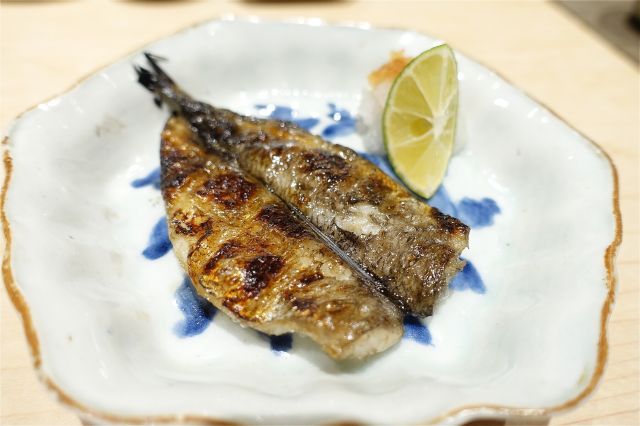
A new style of sushi born from the evolution of omakase sushi and sake
From “Okonomi” to ‘Omakase’—the changing style of ordering sushi
In the past, sushi restaurants typically offered “Okonomi,” where customers ordered their favorite toppings in their preferred order. This style, considered the origin of Edomae-style sushi, allowed customers to freely choose what they wanted to eat rather than leaving it up to the sushi chef.
On the other hand, the “Omakase” style emerged after World War II. As the variety of toppings increased, more customers found it difficult to choose. To avoid the hassle of ordering individually during business dinners or banquets, the practice of entrusting the selection to the sushi chef by saying “Omakase” became widespread.
During the bubble economy of the 1980s, this omakase style became the standard offering at high-end sushi restaurants.
A time when it was normal for sushi restaurants not to serve alcohol
Sushi was originally a fast food served at street stalls. It was considered stylish to eat quickly and leave, and it was not a place to linger over a drink.
Even after sushi restaurants began operating as stores after World War II, the culture of “no lingering” and “no alcohol” remained, and even high-end restaurants typically only offered one or two types of sake.
The shochu boom and the evolution of sake mark a turning point
In the early 2000s, a boom in authentic shochu arrived, and the culture of enjoying sake gradually spread to sushi restaurants. Following shochu, the spotlight turned to sake, which had previously played a supporting role.
Sushi chefs deepened their connections with breweries across the country and began to recognize the high quality of “modern sake.” Many premium sakes with complex flavors, such as acidity and aftertaste, emerged, and this led to the growing demand for small side dishes, or “Tsumami,” to complement them.
Tsumami is the part of a sushi restaurant that showcases its “technique” and “individuality.”
Tsumami is not just an appetizer. It is a part of the meal where sushi chefs express the delicate techniques they cannot fully demonstrate in nigiri sushi, their handling of seasonal ingredients, and their skill in drawing out the flavor of dashi, all condensed into a single dish that embodies the fundamentals of Japanese cuisine.
In recent years, more sushi restaurants have begun focusing on Tsumami served in the first half of their Omakase courses, and it is even said that “you can judge a restaurant’s true quality by its Tsumami.”
Types of Tsumami
Tsumami varies daily depending on the season and availability of ingredients, but some representative styles include the following:
■ Sashimi and vinegar-marinated dishes
・White fish kobujime (marinated in kelp)
・Shime-saba (vinegar-marinated mackerel)
・Thinly sliced Red seabream
→ The texture and acidity bring out the aroma of sake.
■ Simmered dishes
・Simmered Red seabream
・Simmered hamo (pike conger)
・Soft simmered octopus
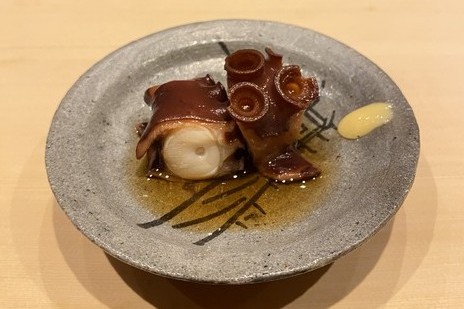
The appearance of Soft simmered octopus
→ The sweet and savory broth goes well with junmai sake.
■ Grilled and broiled dishes
・Sawara grilled in Saikyo miso
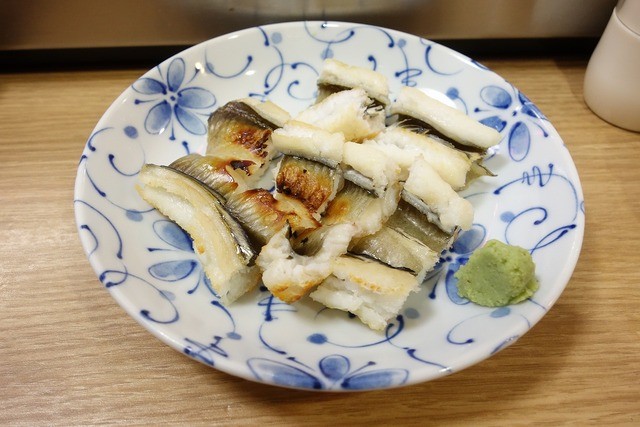
The appearance of Anago shirayaki
・Conger eel Shirayaki
・Mackerel Yuanyaki
→ A dish with a miso and soy sauce flavor that goes well with sake.
■ Steamed dishes and warm small dish

The appearance of Chawanmushi
・Chawanmushi (Steamed egg custard)
・Sakamushi (Sake-steamed clams)
・Furofuki daikon (Simmered daikon radish)
→ The warmth and aroma of the broth add depth to the course.
■ Vinegared dishes and light appetizers
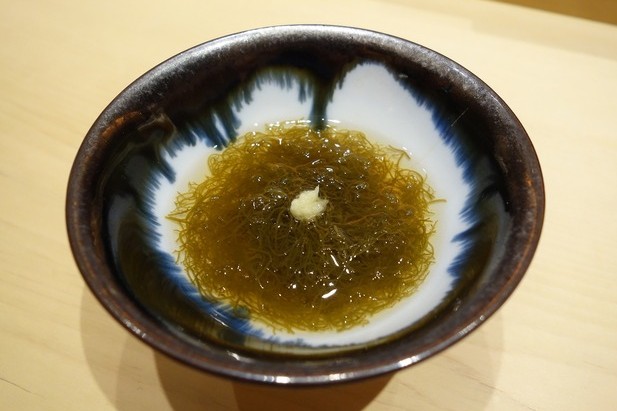
The appearance of Mozukusu
・Mozuku vinegar
・Cucumber and jellyfish vinegared dish
・Yuzu-flavored namasu
→ Used to cleanse the palate or change the flow of the meal.
■ Delicacies
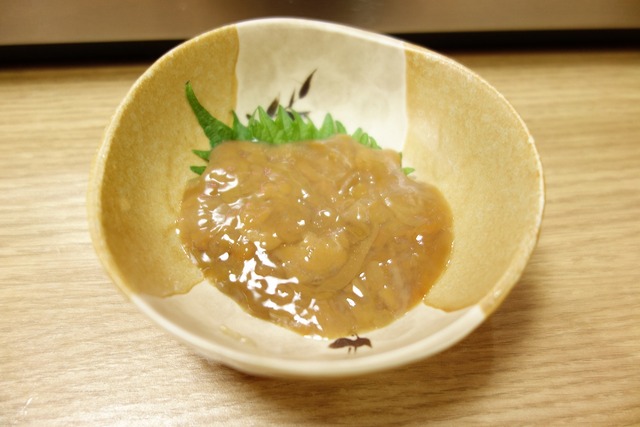
The appearance of Konowata
・Konowata
・Karasumi daikon
・Shuto and cream cheese
→ Even a small amount is full of flavor and goes well with sake.
The Role of Tsumami in Modern Omakase Course
As the number of Tsumami dishes increased, diners would become full just from eating them, so chefs began to reduce the portion size of each dish and carefully calculate the overall flow of the meal.
In today’s high-end sushi restaurants, a typical menu consists of around 10 Tsumami dishes and 8–10 pieces of Nigiri sushi.
This style allows guests to fully enjoy the harmonious blend of “Nigiri sushi,” “Japanese cuisine,” and “sake.”
Summary: Sushi restaurant Tsumami is a symbol of the “evolving sushi culture.”
The background behind sushi restaurants serving Tsumami includes the evolution of sake, the deepening of sushi chefs’ skills, and the “aesthetic design” of the entire Omakase course.
Tsumami is no longer a supporting role but has become one of the new main characters of sushi culture. Tasting the Tsumami served first in an omakase course will reveal the philosophy and true value of the sushi restaurant. That is no exaggeration.